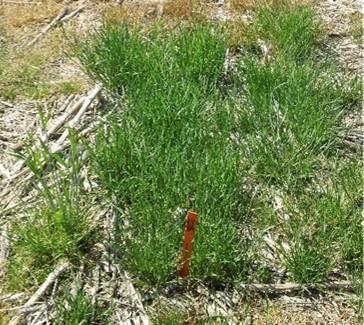Considerations for Pre-Plant Applications- Italian Ryegrass
Italian ryegrass has been giving us trouble the past couple of years. I’ve had several reports of ryegrass control failures following glyphosate applications. Last year, seeds from 49 ryegrass populations from Maryland and Delaware were screened for glyphosate-resistance by Dr. Caio Brunharo’s lab at Penn State. Out of 40 populations screened, all were controlled by glyphosate at 2 lb. ae/A.
This indicates that recent troubles controlling ryegrass may be due to application issues rather than glyphosate-resistance. This species can be particularly tricky to manage this time of the year, so it’s important to remember:
- Cold weather affects glyphosate uptake and translocation. Applications should be made when the temperature is greater than 55°F and consistently remain above 45°F for 3 to 5 days to be effective.
- Higher rates will be needed to control ryegrass compared to other species (1.25 to 1.5 lb. ae a/A).
- Plants should be less than 6” but no more than 8” tall at the time of application.
- Other components in the tank can also affect glyphosate performance.
Include a spray grade ammonium sulfate (8.5lb. to 17lb. /100 gal) in the tank to abate water quality issues. UAN and high rates of triazine herbicides (>0.25 lb. ai/A), such as atrazine, that are included in the tank can also reduce glyphosate absorption and translocation.
If glyphosate alone fails, try tank mixing or alternative herbicides. Last year at the Lower Eastern Shore REC, 98% ryegrass control was achieved with glyphosate (1.25 lb. ae/A) + clethodim (0.121 lb. /A) + nonionic surfactant (0.25%v/v) + AMS (8.5lb./100 gal) or sequential applications of paraquat (1 lb/A) + crop oil (1%v/v) + AMS (8.5lb./100 gal) made 14 days apart (Figure 1). In trials conducted in Pennsylvania, glyphosate + 0.02 lb. rimsulfuron/A also controlled ryegrass greater than 95%. Always consult the label for important information such as tank mixing and plant back intervals before applying any pesticide.

This article appears in April 2024, Volume 15, Issue 1 of the Agronomy News.
